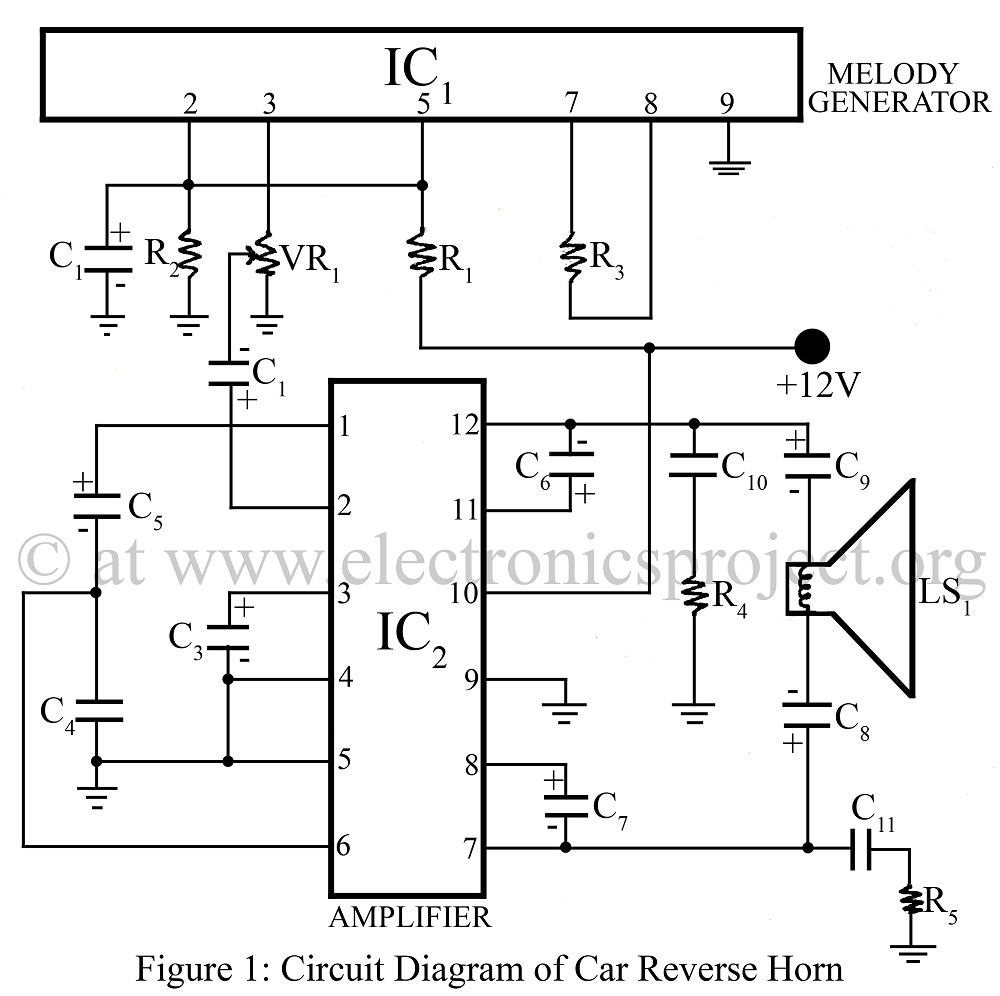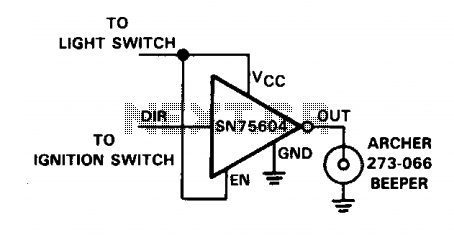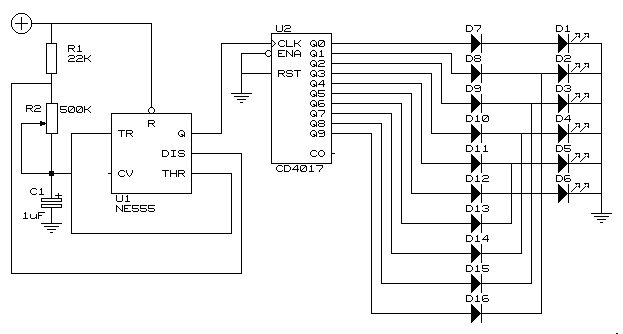
Car Reverse Horn

The Car Reverse Horn is a circuit designed for use in vehicles, utilizing a melody generator integrated circuit (IC) CTC2877 in conjunction with an amplifier IC AN7148. This circuit diagram facilitates the implementation of a reverse horn system in automobiles, providing auditory alerts when the vehicle is in reverse gear.
The Car Reverse Horn circuit operates by generating a melody or sound that alerts pedestrians and other vehicles of the car's movement in reverse. The CTC2877 melody generator IC is responsible for producing a specific tune or sound sequence, which is essential for making the reverse horn more noticeable and less monotonous than a standard beep. This IC can be programmed to produce various melodies, enhancing safety and awareness in busy environments.
The amplifier IC AN7148 is employed to boost the output signal from the CTC2877, ensuring that the generated sound is loud enough to be heard over ambient noise. The integration of these two ICs allows for a compact and efficient design, suitable for automotive applications.
The circuit typically includes a power supply section, which may consist of a voltage regulator to ensure stable operation of the ICs. Additionally, a speaker or piezoelectric buzzer is connected to the output of the AN7148 to produce the audible sound. The overall circuit may also include components such as resistors and capacitors to filter and stabilize the audio output, as well as a switch or sensor that activates the reverse horn when the vehicle is shifted into reverse gear.
This design not only adds an element of safety to vehicle operation but also allows for customization of the sound, catering to individual preferences or regulatory requirements. This versatility makes the Car Reverse Horn a valuable addition to modern automotive electronics.Car Reverse Horn can be used in car as reverse horn circuit diagram using melody generator IC CTC2877 and amplifier IC AN7148.various automobile project with description. 🔗 External reference
The Car Reverse Horn circuit operates by generating a melody or sound that alerts pedestrians and other vehicles of the car's movement in reverse. The CTC2877 melody generator IC is responsible for producing a specific tune or sound sequence, which is essential for making the reverse horn more noticeable and less monotonous than a standard beep. This IC can be programmed to produce various melodies, enhancing safety and awareness in busy environments.
The amplifier IC AN7148 is employed to boost the output signal from the CTC2877, ensuring that the generated sound is loud enough to be heard over ambient noise. The integration of these two ICs allows for a compact and efficient design, suitable for automotive applications.
The circuit typically includes a power supply section, which may consist of a voltage regulator to ensure stable operation of the ICs. Additionally, a speaker or piezoelectric buzzer is connected to the output of the AN7148 to produce the audible sound. The overall circuit may also include components such as resistors and capacitors to filter and stabilize the audio output, as well as a switch or sensor that activates the reverse horn when the vehicle is shifted into reverse gear.
This design not only adds an element of safety to vehicle operation but also allows for customization of the sound, catering to individual preferences or regulatory requirements. This versatility makes the Car Reverse Horn a valuable addition to modern automotive electronics.Car Reverse Horn can be used in car as reverse horn circuit diagram using melody generator IC CTC2877 and amplifier IC AN7148.various automobile project with description. 🔗 External reference





